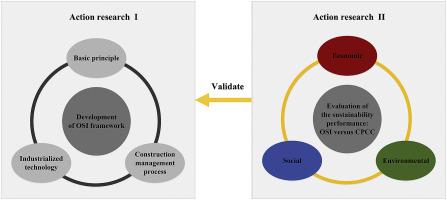The Covid-19 pandemic has had a long-lasting impact on the global economy, further highlighting the precarious position of the construction sector. Industrialised construction methods can help contractors to make their ways of working more resilient, and there is growing evidence of their successful implementation around the world.
Embracing modern methods of construction in Australia
Mirvac is one of Australia’s largest property development corporations, and is known for its thriving residential communities, landmark offices and mixed-use precincts. Since its founding in 1972, Mirvac had approached property development as a ‘stick and brick’ exercise – but now, it has fully embraced modern methods of construction and prefabrication.

Prefabrication has delivered many benefits to Mirvac including faster programme schedules, less management of trades onsite, fewer safety risks and fewer overall risks. Another important benefit of prefabrication has been to reduce the amount of construction waste, which is a great step towards the company’s sustainability target of sending zero waste to landfill by 2030.
In a pilot at Tullamore in Melbourne, Mirvac built four houses using traditional construction methods and four identical homes using prefabricated wall and floor panels. Its aim was to test the value of using prefabrication in terms of time, cost, safety, quality and waste reduction.
The results were conclusive. The prefab programme was 23% faster than the traditional build, taking almost seven fewer weeks to complete. Labour hours reduced by 11% and significantly less material needed to be lifted or manually handled. High-risk work, such as scaffolding, reduced by 42%, meaning a reduction in health and safety risks.
The prefab build also eliminated six weeks of traffic for the local community, with fewer deliveries being made to the site. In addition, waste onsite was reduced by a staggering 50%, and air tightness for efficiency and comfort also scored well.
